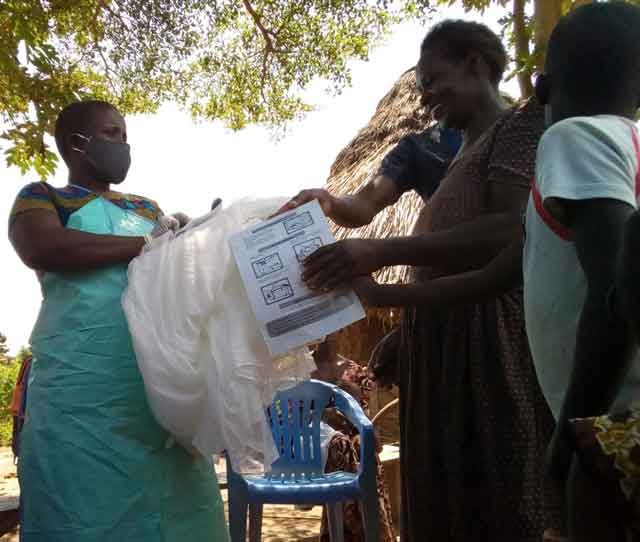
Soroti, Uganda | THE INDEPENDENT | A number of residents in Serere and Soroti districts have missed out on the long-lasting insecticide mosquito nets being distributed by the government, as part of a new campaign codenamed ‘Under-the-net. The government procured 75.5 million mosquito nets to be distributed across the country in six waves.
Serere, Soroti, Kaberamaido and Kalaki districts in Teso sub-region are among the 25 districts where the distribution of mosquito nets started last week, as a key intervention by the government to protect citizens against Malaria, the leading cause of hospital visits and deaths, across the country. Up to 4,371,259 mosquito nets were sent to the region.
According to the Ministry of Health guidelines, each mosquito net is planned for two people and a family unit can get up to six mosquito nets. But Rose Alado, the district representative for People with Disabilities in Serere says that the exercise is uncoordinated and that some of the residents received fewer nets than planned.
Teresa Ikiror Otilo, 76, a resident of Acaboi- Aoja in Gweri Sub County, Soroti district says she has been waiting for mosquito nets over the last one week in vain. Unlike the past, when each community had a distribution centre, this time around, recipients were told to wait from their homes.
Ikiror says that the distribution was selective and left out a number of households. She is concerned that she still has to sleep under a tattered mosquito net.
Richard Alibet, another resident in Otatai, Asuret Sub County says most of the people in the village have not received mosquito nets.
The authorities in Serere district are now considering to distribute the extra 515 bales of mosquito nets erroneously delivered to the district by National Medical Store- NMS.
Gabriel Otiira, the Assistant Chief Administrative Officer in Serere says the district received a total 5,857 bales in excess of 515 as per the micro planned data using projections from the number of household and population size. He, however, notes that only 85 per cent of the population across the district had been served.
******
URN
 The Independent Uganda: You get the Truth we Pay the Price
The Independent Uganda: You get the Truth we Pay the Price



